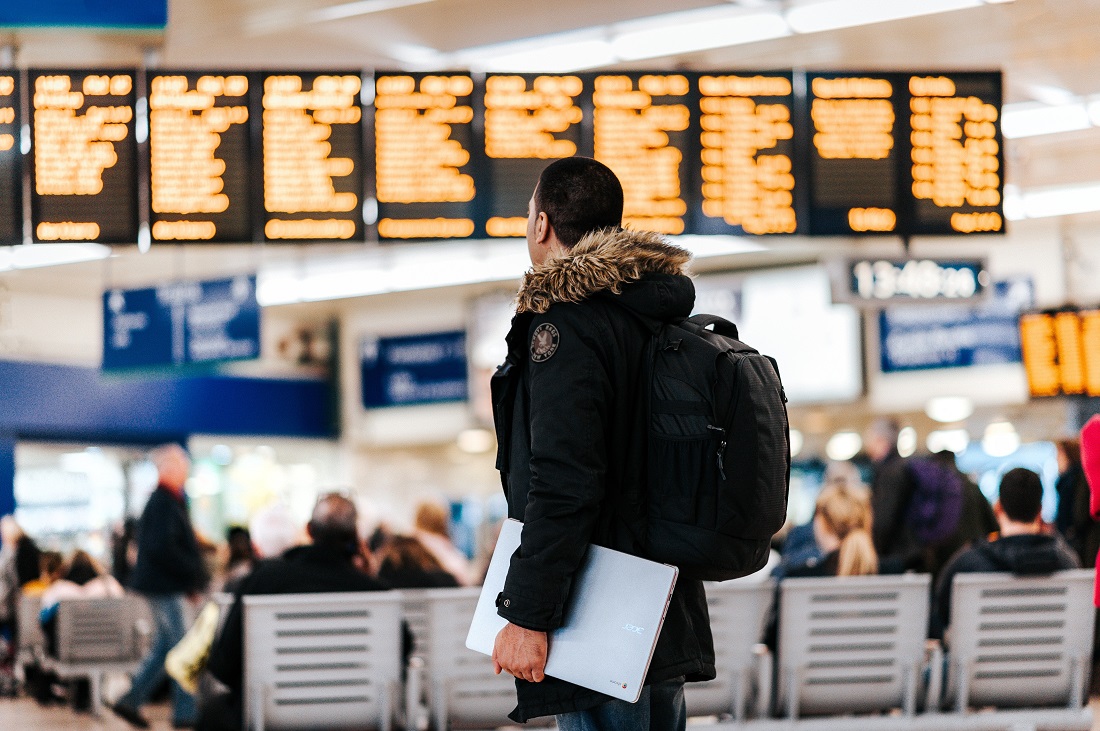Canada is Not Experiencing an Asylum Seeker Crisis
UNHCR States that Border Problems are Not at Crisis-Levels, Though Challenges Remain
Over the past few months, it might seem like Canada and the United States are undergoing some kind of refugee crisis. Daily headlines speak of immigrant caravans and all the problems associated with trying to control this tidal wave of irregular refugees. However, Volker Turk, an official with the Office of the United Nations High Commissioner for Refugees, recently stated that both Canada and the United States are exaggerating their border problems.
Numbers Tell the Truth when Compared to International Totals
According to a recent CTV report, there are approximately 68.5 million displaced refugees worldwide. The vast majority of those running from war, religious and political persecution live in undeveloped countries and flee to neighbouring nations. Areas of the Middle East, Africa, and the Mediterranean are inundated with millions of people who need food, shelter, and medical assistance.
Canada documented approximately 18,000 individuals that crossed into the country in 2017 through unauthorized points of entry. Another 32,000 gained entry by applying for refugee status at a port of entry or in their country of origin through an immigration lawyer.
Countries such as Turkey, Pakistan, and Uganda are each hosting well over 1.5 million refugees every year. None of these nations have the economic structure to support that kind of influx. These, say Mr. Turk, are the countries in a crisis.
Maintaining Perspective: Housing and Helping Refugees is Still a Challenge
Even if the numbers of refugees are not significantly impacting Canada's ability to function, they still present a humanitarian and economic challenge. However, this is not a situation which cannot be addressed with more strategic planning and additional government resources. While the government may have been caught off guard by the surge of refugees, it is well-equipped to prioritize this issue and ensure that the needs of the newcomers are adequately looked after.
For example, the government has been working to hire additional Board Members for the Immigration and Refugee Board of Canada in order to reduce the refugee backlog and to hear more cases. The IRB is also implementing policies such as expediting the refugee claims of individuals from certain countries and re-opening its offices in Ottawa. These measures are in response to the additional demands placed on the system over the past two years.
With its geographical position, bordered by three oceans and the United States, Canada is not likely to ever receive the more serious avalanche of refugees that are encountered in areas such as Uganda and Turkey. While addressing the challenges associated with processing thousands of IRCs, it should not be forgotten that Canada continues to enjoy economic growth as a peaceful democratic nation.
For those seeking to start a new life in Canada, they may face additional challenges without an immigration lawyer as the Immigration and Refugee Board continues to its work and aims to minimize the negative rhetoric by fully enforcing the nation's rules and regulations.
Canadian Advantage over US: Immigration
New Policies and a Commitment to Growth Highlight Canada's Advantage in the Immigration Game
As the world focuses on all the noise being made in the United States regarding immigration, Canada's Prime Minister Justin Trudeau is looking forward to seeing his country continue to expand by building a better workforce for the future.
The United States Tax Breaks Benefit the Corporations, Not the Workers
While it might seem that recent changes to the U.S. tax code have paved the way for increased growth in the commercial and industrial world, the tax breaks are designed to put money back in the pockets of the company owners. There has been little effort placed in expanding the workforce by encouraging qualified specialists to gain entry to the country and receive work visas in an expedited manner.
Canada Features a Fast-Track Approval Process for Eager Immigrants
According to a recent article, Canada has placed a priority on inviting well-qualified immigrants to apply for a visa and receive approval in as little as two weeks. Should a young professional wish to seek out employment in the United States, they will be waiting at least six weeks for the visa to go through, if it is even approved.
While American businesses say they want to expand their educated workforce, tighter regulations and ongoing struggles with the Mexican border do little to encourage an immigrant to apply with any sense of confidence.
Trudeau Leads the Canadian People in Welcoming Immigrants and Refugees
After receiving a work visa to enter the country, the next challenge facing many immigrants is finding a welcoming neighbourhood in which to live.
The Prime Minister of Canada recently stated at Fortune‘s Most Powerful Women International Summit, "We’re a country that is open to immigration right now.”
He also referenced that the Canadian people are happy to welcome new neighbours from a variety of cultural backgrounds. The government has even placed a goal of increasing the workforce by 1% of the entire population through increased immigration. Over the border to the south, the headlines are filled with a country that struggles with racism and inclusion while battling to close its borders.
Canada clearly wants to become the first choice for a family seeking to find a better life while escaping economic or political hardship.
While it is never easy to make the decision to leave one's home when looking for a new country in which to put down roots, choosing a government that has placed an emphasis on welcoming an immigrant population will always be the more favourable choice than living in fear and distress. Pair the positive atmosphere with a reduction in red tape and it becomes clear that Canada is working toward a more prosperous future that includes new arrivals from across the globe.
Canada Signs UN Migration Pact
Canada joins initiative to embrace international cooperation on migration issues
This week Canada joined 160 other nations in signing the Global Compact for Safe, Orderly and Regular Migration ("UN Migration Pact") agreement. This pact concludes a three-year discussion. A ground-breaking event as, for the first time, there is an established framework for international cooperation amongst countries to work together on issues related to the causes and impacts of migration.
What Is the Un Pact About?
In 2015 Europe experienced a migration crisis on a scale not seen since World War II. This event spurred talk by the United Nations to come together to address how member countries could respond. These discussions ultimately evolved to create the UN Migration Pact.
The goal of the agreement is to set “a common understanding, shared responsibilities and unity of purpose regarding migration.” With that understanding, it's expected nations that signed onto the agreement will benefit from better international cooperation with migration issues.
Other objectives the agreement hopes to accomplish include:
- Balancing fairness to states and facilitating safe and orderly migration.
- Streamlining immigration protocols.
- Providing clear information on immigration laws and application processes.
- Offering better screening processes.
- Protecting the human rights of migrants and refugees.
- Combating human trafficking and discriminatory migration policies.
- Protection for refugees from unlawful imprisonments, torture and abuse from their home countries.
Canada played an active role in supporting this agreement. Over the last two years, tens of thousands of individuals have crossed into the nation via non-official entry points. One of the key advantages of the agreement is that Canada now has the opportunity to closely work with source countries of irregular asylum seekers.
It is noteworthy that the Migration Pact is not a treaty and does not create any new legal obligations. Rather, it is a "non-legally binding, cooperative framework that … fosters international cooperation among all relevant actors on migration, acknowledging that no state can address migration alone, and upholds the sovereignty of states and their obligations under international law." The compact’s focus is that "safe, orderly and regular migration works for all when it takes place in a well-informed, planned and consensual manner."
Critics Unconvinced
While proponents of the agreement believe the migration pact solves many issues associated with migration, there has also been some opposition. As the agreement was taking shape, protests broke out inside and outside of Canadian borders. Critics feel the UN Migration Pact will force Canada to give up sovereignty over its border control and internal immigration policies.
Conservatives are also concerned about the media's role in reporting immigration issues, stating a section of the UN agreement includes wording that calls on member states to suspend public funding of media outlets for reporting in unapproved methods. Canadian supporters of the agreement insist this section of the agreement was not aimed at Canada as its media is fair and balanced.
Hussen, speaking from Morocco where the UN summit and signing for the pact was taking place, defended Canada's involvement. He also noted the new agreement ensures a "better future" for people so they can safely come to Canada without having to engage in irregular migration.
“People talk about how we should approach irregular migration — one of the ways to do that is to work with other countries,” Immigration Minister Ahmed Hussen said, reports Global News. “One of the things that we do is work with partner countries to assist them with job creation and skills-development programs that enables source countries for migrants."
Data Shows Immigration Lawyers Outperform Consultants and Get More Results for Refugees and Immigrants
Know Your Options Before You File Your Application
If you're looking for someone to represent you with your immigration issues, in Canada you have several options. You can represent yourself, retain an immigration lawyer, or settle for an immigration consultant. When making this important decision, you should consider recent statistics showing that lawyers have the highest success rates when it comes to application approvals.
Differences Between Lawyers and Consultants
The most significant differences between immigration lawyers and consultants are that immigration lawyers have legal training, have obtained a law degree and have been licenced by the Law Society of Ontario. Immigration lawyers have the skills, knowledge and experience to increase your chances of success in your case.
Consultants hold a one-year certificate and pass an exam, but they don't have a law degree, nor have they gone through the rigorous preparation necessary to pass a bar exam. Immigration lawyers in Canada know the law intimately and stay up-to-date on the latest developments in immigration law. They can also represent and advocate for you competently in the event that your case goes to federal court.
Data Shows Immigration Lawyers Have Higher Success Rate
Data recently released shows that people who turn to Canadian immigration lawyers to prepare their Canadian visa applications have a much higher acceptance rate than those who prepare their own or hire a consultant. According to the figures, in 2017, Canada received 342,154 temporary resident applications. Of those applications, 18.9 percent was rejected. Here is the breakdown of the numbers.
- Eighty-six percent of applicants represented themselves, and 19.3 percent was refused.
- Six percent hired consultants, and 18 percent was refused.
- Five percent turned to an immigration lawyer, and 10.4 percent was refused.
“Canadian lawyers’ rigorous education, legal analysis skills, and high ethical standards enforced by an effective regulator have long been understood to result in better outcomes,” said Marina Sedai, chair of the Canadian Bar Association’s immigration section, reported The Star.
A Passion and A Calling
Lawyers join their profession because of a passion and calling. It's more than business, it's about helping and protecting people to ensure they are treated fair and just under the law, even with the toughest of cases. An immigration and refugee law office can serve you in many ways. They'll be pleased to represent you on your citizenship application, or refugee claim. An immigration lawyer ensures you're strongly positioned to succeed, however, in the event that your application or refugee claim is refused, he or she will also help you to appeal the decision.
When seeking out representation, you want someone who thoroughly understands the law and will look out for your best interests. As recent data highlights, hiring the best immigration lawyers in Canada increases your chances of success in any of your immigration-related legal issues.
Canada Deals with Growing Number of American Asylum Seekers
Children with U.S. Citizenship Widely Believed the Reason For High Numbers, And Could Set New Precedent
Statistics from Canada’s continued influx of irregular asylum seekers has revealed that some of the people seeking refugee protection in Canada are U.S. citizens.
According to government statistics, between January and August of 2018, 1,215 American citizens sought asylum at inland entry points. However, officials at Immigration, Refugees, and Citizenship have clarified that these numbers don’t provide the full story.
Most U.S. Citizens Claiming Asylum are Minors with Non-Citizen Parents
Most of these claimants are, apparently, minors accompanying their parents.
“The majority of U.S. citizens claiming asylum as minor asylum claimants who were born in the United States whose parents are citizens of another country,” said Mathieu Genest, the press secretary for Immigration Minister Ahmed Hussen. “In these instances, the claims of persecution are made against the parents’ country of origin, not the United States.”
According to Genest, these U.S. citizens are the children of Haitian or Nigerian nationals affected by U.S. President Donald Trump’s end to a temporary protected status program. These nationals were living in the U.S. for years, dating back to the 1990s, after they were displaced by conflict or environmental disasters.
Fear of Persecution
Still, even without the end of these programs, Trump’s generally anti-refugee, anti-immigrant attitudes have driven thousands of asylum seekers to Canada’s borders.
As mentioned in my comments to The Canadian Press, the United States’ political landscape could very well be the trigger for migrants claiming fear of persecution and claiming protection in Canada. What’s more, Trump’s public comments about eliminating birthright citizenship—that people born in a country are automatically granted citizenship there— is a further source of fear for these families.
The anti-immigration policies in the United States and the fears it has given rise to, particularly for certain segments of the population targeted by those policies, could set a new precedent in how Canada approaches arguments in refugee claims, and indeed how we view asylum seekers. Regardless of how many years certain individuals may have lived in the United States, if they had legal status in that country, they would not have feared an imminent removal to their home country.
It is when that fear became triggered by the termination of their legal status that the prospect of return and removal materialized.
As such, refugee lawyers can argue that the assessment of subjective fear in such circumstances should be based on the person’s change in circumstances and the emergence of imminent peril, which in turn resulted in their decision to flee to Canada.





